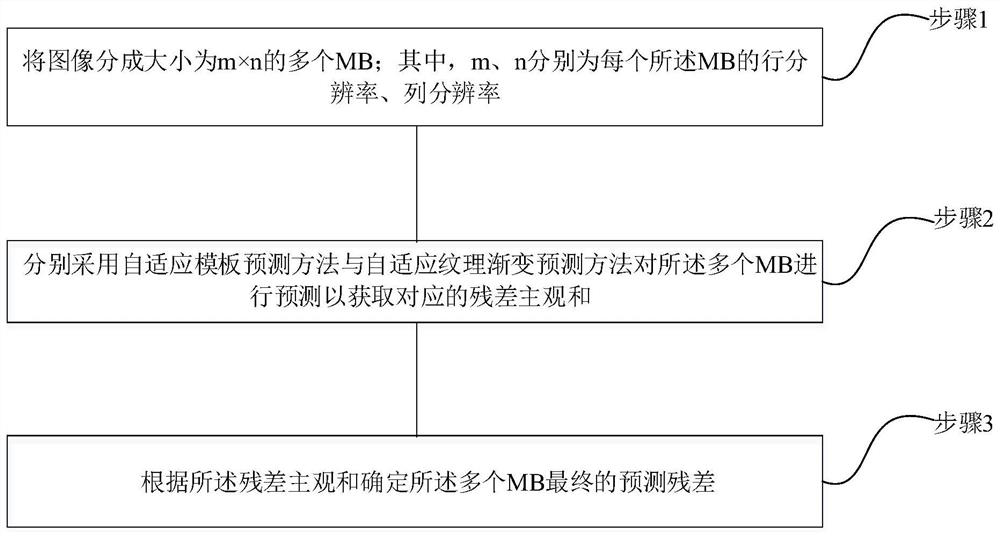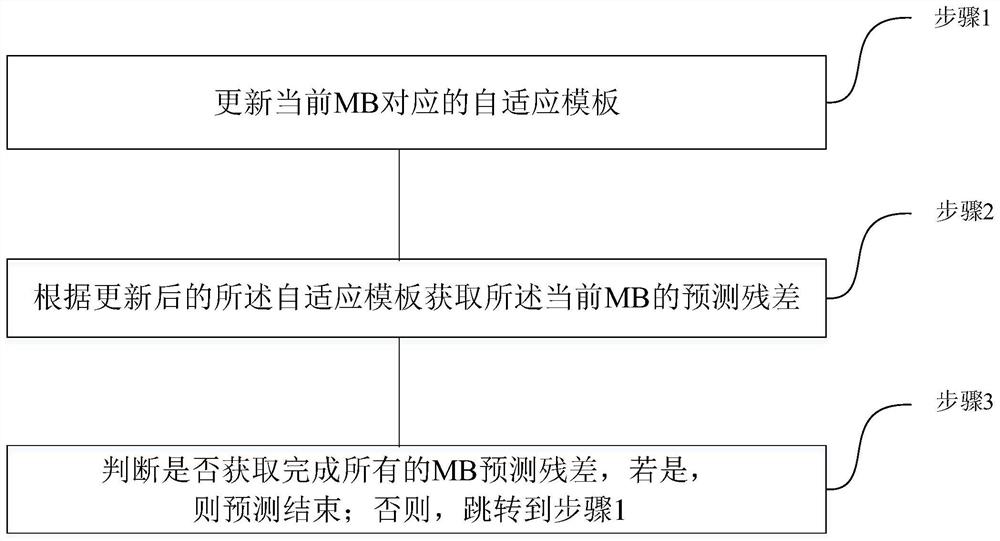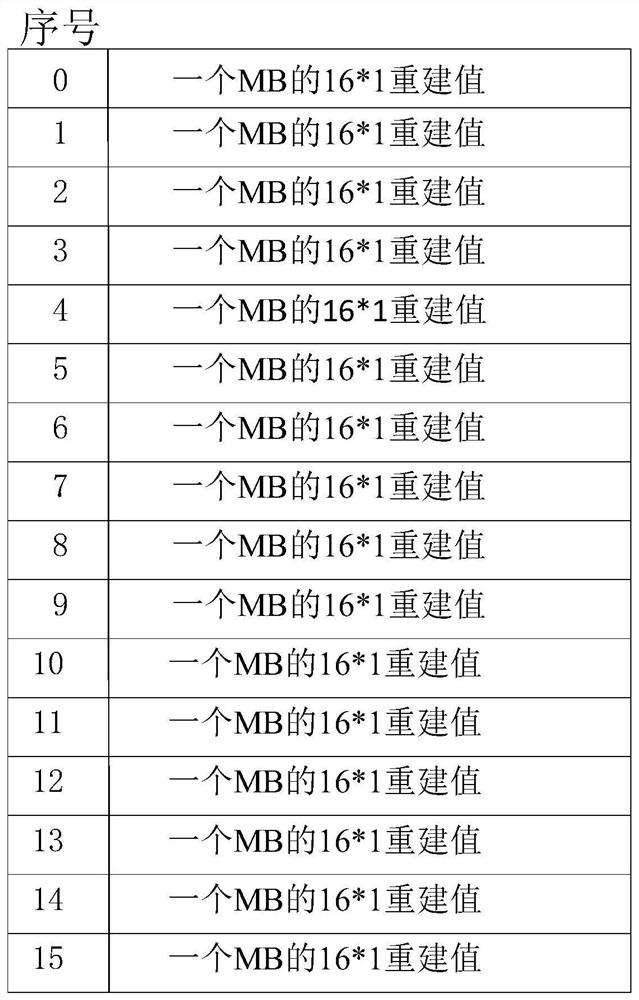Post-selection Prediction Methods in Bandwidth Compression
A prediction method and a technology of bandwidth compression, applied in the multimedia field, can solve problems such as poor image effects and prediction methods that cannot obtain prediction effects, and achieve the effect of optimizing the prediction effect
- Summary
- Abstract
- Description
- Claims
- Application Information
AI Technical Summary
Problems solved by technology
Method used
Image
Examples
Embodiment 1
[0055] See figure 1 , figure 1 It is a flowchart of a post-selection prediction method in bandwidth compression provided by an embodiment of the present invention. The method comprises the steps of:
[0056] Step 1, dividing the image into multiple MBs with a size of m×n; wherein, m and n are the row resolution and column resolution of each MB respectively;
[0057] Step 2. Using an adaptive template prediction method and an adaptive texture gradient prediction method to predict the multiple MBs to obtain corresponding residual subjective sums;
[0058] Step 3. Determine the final prediction residuals of the multiple MBs according to the subjective sum of the residuals.
[0059] Specifically, step 2 may include the following steps:
[0060] Step 21. Using an adaptive template prediction method to predict the multiple MBs to obtain the first residual subjective sum;
[0061]Step 22: Predict the multiple MBs using an adaptive texture gradient prediction method to obtain a s...
Embodiment 2
[0096] This embodiment focuses on explaining the principle and implementation of the present invention on the basis of the foregoing embodiments. Specifically, the post-selection prediction method in the bandwidth compression provided by the present invention includes the following steps:
[0097] Step 1. Dividing the image into multiple MBs with a size of m×n; wherein, m and n are the row resolution and column resolution of each MB respectively, that is, each MB contains m×n pixel components; Wherein, the size of each MB can be set arbitrarily, preferably, it can be set as 8×1, 8×2, 16×1, 16×2, 32×1 or 32×2.
[0098] Step 2. Using an adaptive template prediction method and an adaptive texture gradient prediction method to predict the multiple MBs to obtain a prediction residual corresponding to each pixel component;
[0099] Wherein, an adaptive template prediction method is used to predict the current MB to obtain the first prediction residual of each pixel in the current M...
Embodiment 3
[0112] This embodiment focuses on explaining the principle and implementation of the adaptive template prediction method in bandwidth compression on the basis of the foregoing embodiments.
[0113] See figure 2 , figure 2 A flow chart of an adaptive template prediction method provided by an embodiment of the present invention, the method includes the following steps:
[0114] Step 1. Update the adaptive template corresponding to the current MB;
[0115] Step 2. Obtain the prediction residual of the current MB according to the updated adaptive template;
[0116] Step 3. Judging whether all MB prediction residuals have been obtained, if yes, the prediction ends; otherwise, jump to step 1.
[0117] Among them, before step 1, it may also include:
[0118] Step X1, determining the number of epitopes in the adaptive template list and the sequence number of the epitopes;
[0119] Step X2, initializing and filling the adaptive template.
[0120] Among them, step 1 may include: ...
PUM
 Login to View More
Login to View More Abstract
Description
Claims
Application Information
 Login to View More
Login to View More - R&D
- Intellectual Property
- Life Sciences
- Materials
- Tech Scout
- Unparalleled Data Quality
- Higher Quality Content
- 60% Fewer Hallucinations
Browse by: Latest US Patents, China's latest patents, Technical Efficacy Thesaurus, Application Domain, Technology Topic, Popular Technical Reports.
© 2025 PatSnap. All rights reserved.Legal|Privacy policy|Modern Slavery Act Transparency Statement|Sitemap|About US| Contact US: help@patsnap.com



